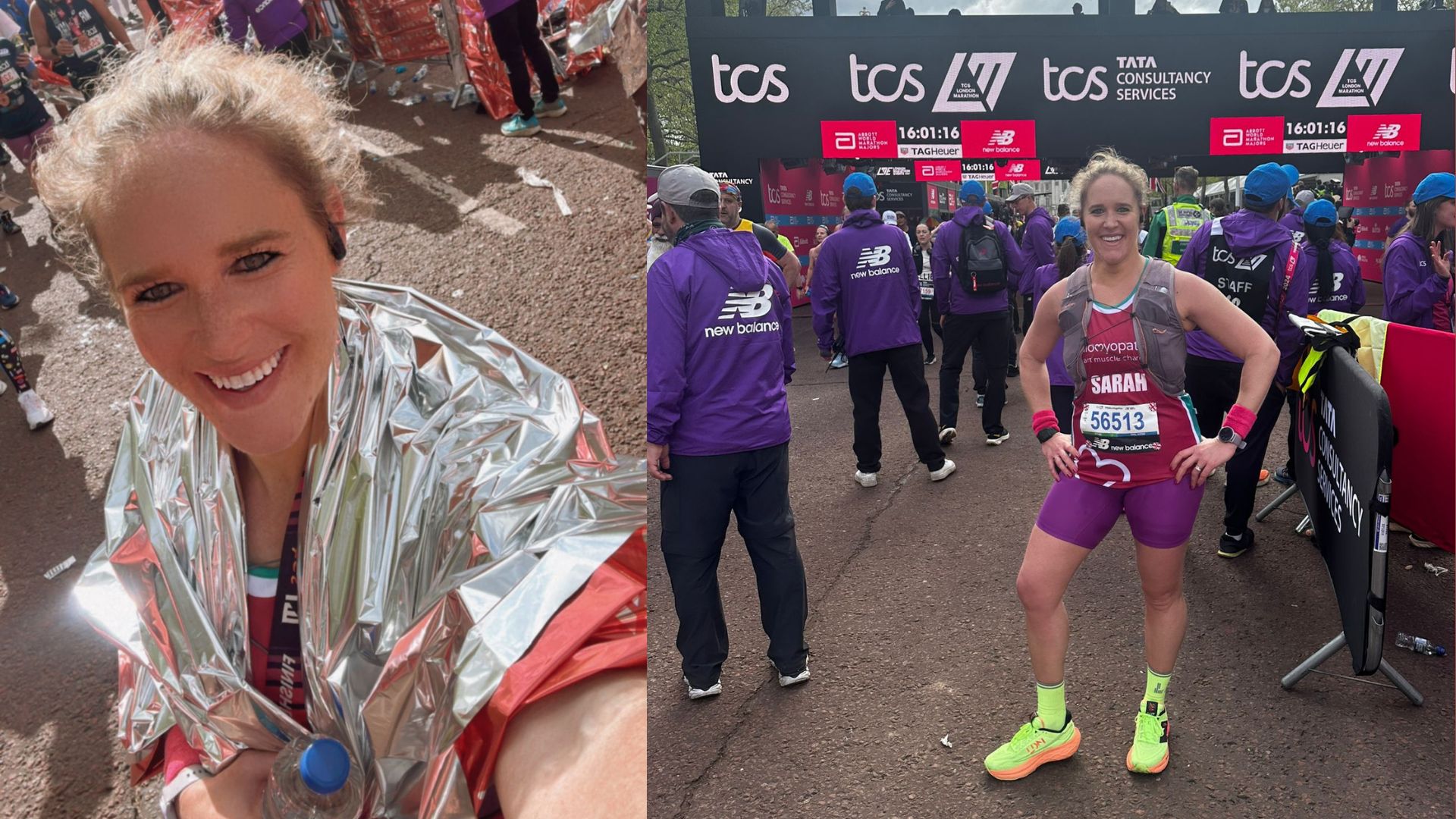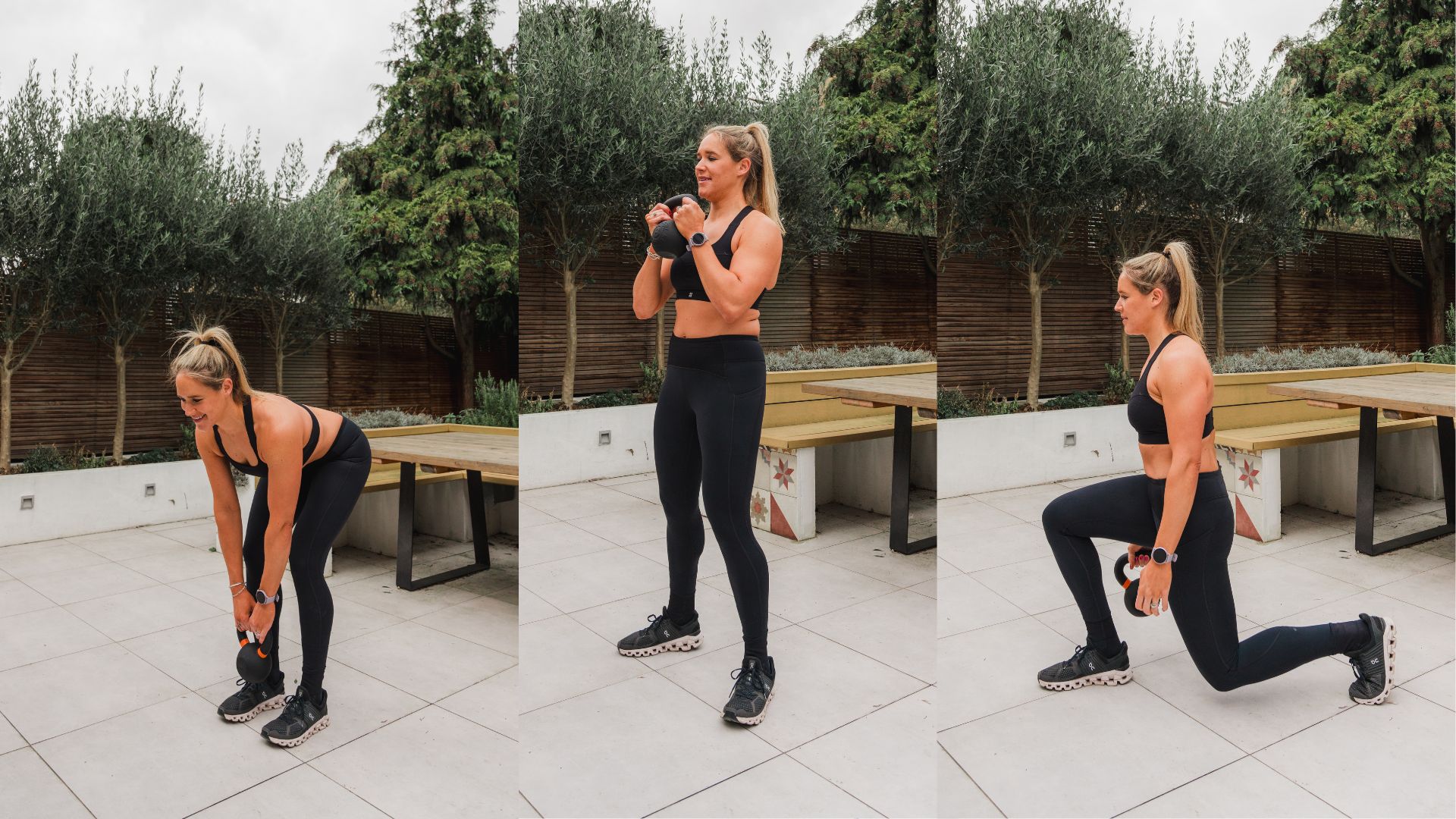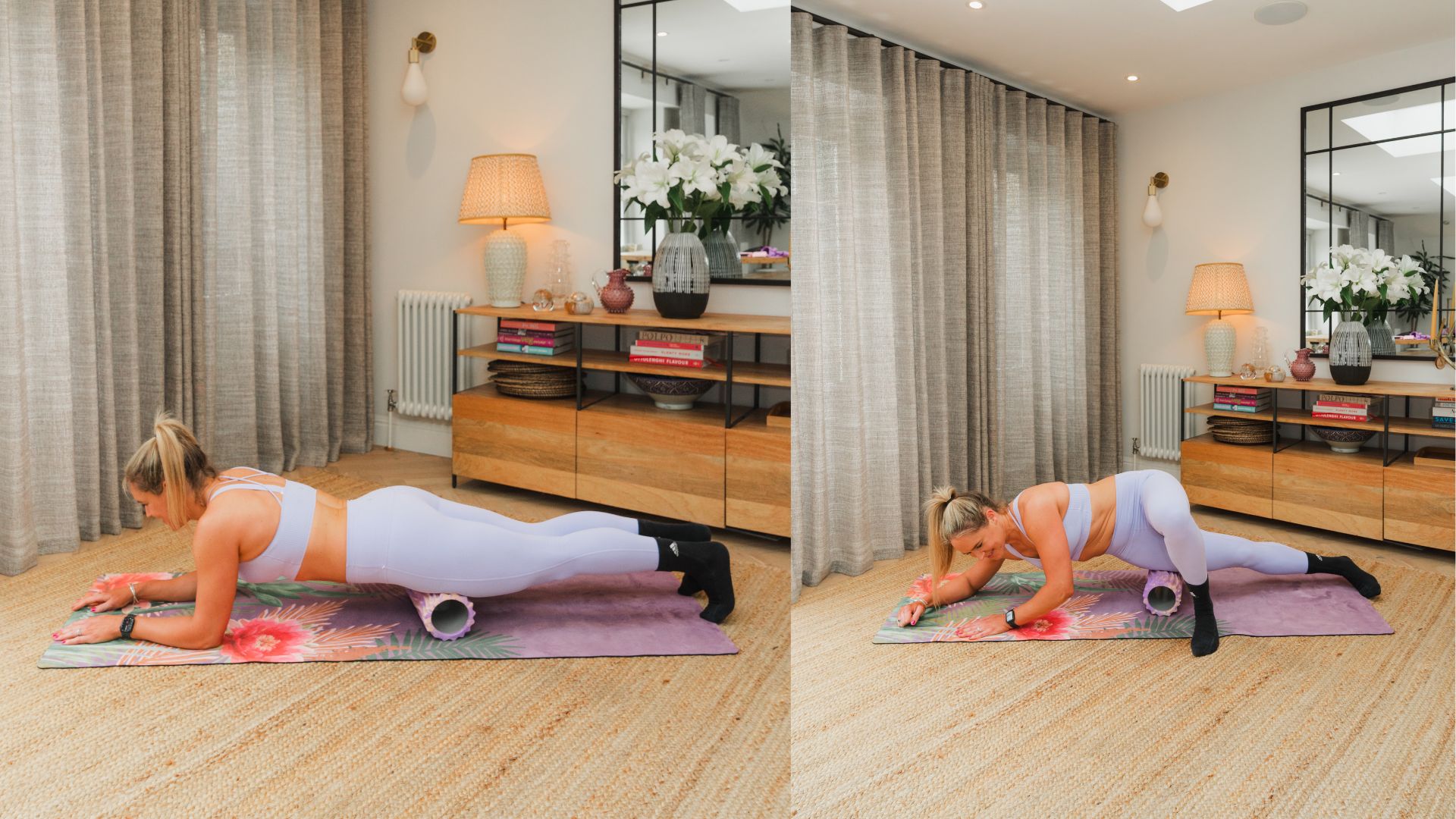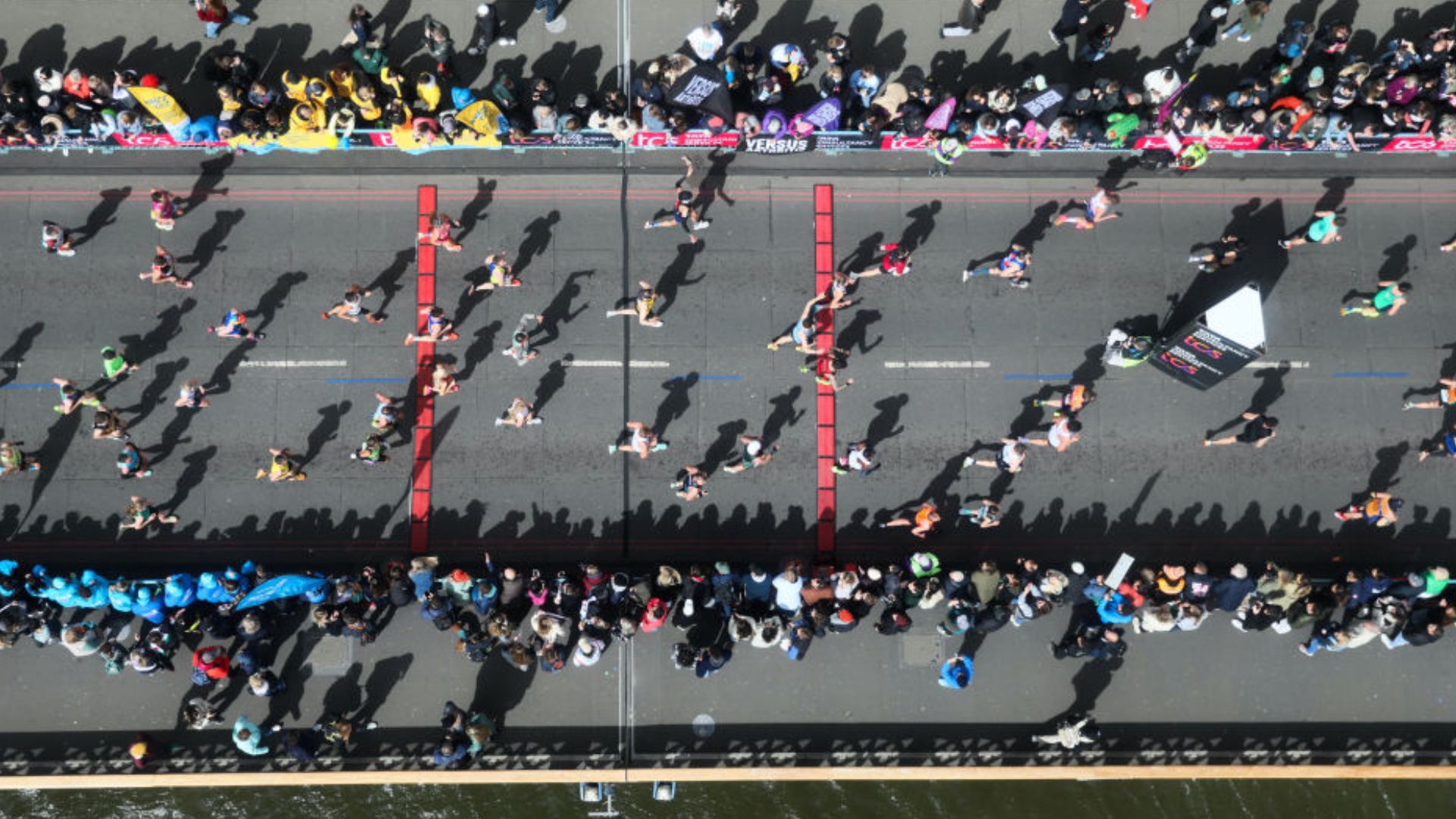I ran my first marathon in my 40s - here's 7 things I wish I'd known as a beginner
Feeling inspired by the recent London Marathon? Here new runner Sarah Campus reveals how she learnt how to run a marathon for beginners


If you've been on social media in the last month, you've likely seen at least someone you know running a marathon recently. It could have even been someone you wouldn't have expected to take on the 26.2-mile (42.2km) distance - and that's because it's entirely possible to take on the challenge as a beginner.
Mum-of-three and total running newcomer Sarah Campus decided to step outside her comfort zone last year and sign up for the London Marathon without telling anyone. Although she'd been regularly lifting weights for years and walking regularly, this was an entirely different ballgame.
Here, the London Marathon 2024 finisher reveals how to start running as a beginner and take it all the way through to marathon race day - and what she wish she'd known before putting on her running shoes for the very first time.
How to run a marathon for beginners
1. Don't do it on your own
Going from never running to marathon training is no easy feat, that's for sure, but it's even harder when you attempt to do it by yourself. "There are some fantastic programs out there but they are quite generic. It's good you can say you'd like to do three runs a week [and tailor the program to your lifestyle], for example. But everyone's journey is completely unique to them, and a coach will tailor your plan exclusively to you," Sarah tells me.
“I went from never running before to doing a marathon, so I wanted to make sure everything was going to be done well, that I would have that gradual increase in distance right for me, and be able to factor in mum life." she says.
The programs Sarah refers to include the likes of Runna and Coopah, two of the best running apps. While these plans are excellent for finding your feet and conquering your first 5km, 10km, and even half-marathon, as the mileage increases, so does the support you need as a new runner, so they won't be suitable for everyone.
It was a move that paid off - Sarah developed a stress fracture on her ankle five weeks into training, taking her off her feet for two months. "If I had gone down the app route, I don’t know whether it would have adapted to cross-training, which is what I had to do."
Sign up for the woman&home newsletter
Sign up to our free daily email for the latest royal and entertainment news, interesting opinion, expert advice on styling and beauty trends, and no-nonsense guides to the health and wellness questions you want answered.
2. Incorporate other forms of exercise into your training
While "nothing compares to running if you're going to do a marathon", as Sarah says, adding other types of training into your routine can help boost your fitness, complement your sessions, and take some of the load off as the miles rack up.
Unable to run at all, and on her coach's advice, Sarah spent time swimming as a workout and strength training for runners instead. She also jumped on her Peloton bike for hours at a time, building up her cardiovascular fitness, ready for when (or if) she could run again.
"Anytime I had to run, I was on the bike. I couldn’t stand up, so there was no impact on my legs for eight weeks."

Adding strength training and other forms of cardio into your running routine can provide variety and help prevent injury.
3. Focus on the mental as well as the physical
Spending hours experiencing the benefits of indoor cycling is very different to the long runs most marathon training schedules demand - but this helped Sarah with a crucial element of running the race on the day: mental resilience.
"I did four three-hour bike rides - that's a lot. It was boring and monotonous, but I just kept thinking about my end goal and why I was doing this, so I did it. I was so determined to get to that start line, with such a clear goal, that I stayed focused," she says.
At points, especially when your training runs start hitting the 20km mark and above, you might feel a little weary and bored on your runs. However, by gradually building the load on your hips, knees, and ankles, the longer runs will help you get to the finish line on race day. So dig deep, find a podcast or workout playlist for motivation, and keep going.
4. Nutrition is key
As a personal trainer and founder of LDN MUMS Fitness, Sarah is no stranger to the importance of nutrition in training - but eating for a marathon is very different to eating with regular exercise.
"I was strict with getting enough protein and carbohydrates. A lot of people are wary of carbs but you certainly shouldn't be. That's your energy source to run at that distance. I ate balanced meals, lots of vegetables and anti-inflammatory foods like turmeric and goji berries. I'd had a shake with protein powder and lots of spinach for hydration after every session, with electrolytes."
"You don’t realise how hungry you get with running," she says. "Not just on the training days but on the rest day, so it’s important to fuel your body right and don’t get too hungry as you need it to progress."
5. Recovery is essential
When people talk about how to run a marathon for beginners, so much focus is given to the specific training, how gruelling it is or how much time it takes from the week. One element Sarah wasn't expecting to be so important was recovery - especially given her injury.
"If you don’t recover well and rest on the days you’re meant to rest, your training will fall short. They are there for a reason, they’re not just the days when you don’t run," she says. "Don’t just sit and do nothing though, because your muscles will seize up - try and do some light swimming and stretching, for example."
And, of course, sleep is an essential element of recovery. "Everyone undervalues sleep as well, but this is so important. I was in bed by 9pm every night, knowing I needed it but also I was maybe going to have an interrupted night’s sleep down to nerves in the weeks leading up to the race."

Sarah took active rest days and rolled out using a foam roller when she wasn't working out.
6. Don't listen to others
Here at woman&home, we're all too familiar with the limitations placed on women by others. The assumption is that, with age, high-impact and challenging exercise is off the table, in favour of low-impact alternatives. While this is better for some, everyone is different, and we also know that post-40 is when many women achieve things they never thought possible in sport. Some complete their first triathlon at 53, find relief from arthritis through running at 60, and take on extreme sports like ice swimming as they approach menopause.
Similarly, people doubted that Sarah was the one who knew her body best. "I had so many people say to me, 'Sarah, should you really be doing this?', 'I don't think you should do it this year', 'You've literally got a stress fracture, do you understand how serious this?'. Of course I did."
"I thought to myself, at the end of the day, it's my body. I will make the decision. If it's not right, I won't do the marathon," she says. "I wasn't going to jeopardise my health but I was going to try and do anything I could to get to the start line."
When Sarah finally got back on her feet, she had four weeks to train, basically starting again from scratch with slow running and a 80/20 running technique of switching between walking and running for minutes at a time, until she could run properly again.
7. Remember to have fun
At the end of the day, exercise is supposed to be fun and one of the many benefits of running for women is the endorphin-induced feelings of happiness and confidence at the end. What with all the challenges she faced during training, Sarah had to remind herself of this stepping up the start line of the London Marathon 2024.
"The energy is great. Very relaxed at the beginning but when you start running, the crowds are amazing. Seeing them all and having people should your name is just incredible," Sarah says.
"It's important to remember to have fun, because whether you have to walk it, run it, jog it, ectara, you can achieve it. It's a great journey - I learnt a lot about myself."
What's it like to run the London Marathon?
The TCS London Marathon, like anywhere else, is 26.1 miles (42.2km) long. The route has remained unchanged since the first event in 1981, with the start point in Greenwich Park near Black Heath and the finish line on The Mall, right in the city centre.
"It was incredibly organised," says Sarah. "At Black Heath, all the staff are so incredibly friendly and helpful. I went straight to drop off my bag first, holding onto my pre-race banana, Cheerios, race vest, gels and electrolytes. I went to the loo because the queue for the toilets is so long - but it goes so fast. Then I did a warm up and went over to my [pre-assigned] wave at the right time."
"At the start line, some people are talking to others, some were not. It was all very relaxed [but the energy was good]. And then the race started - there wasn't too much hype, it just happened."
"The first quarter of the race or so is going through residential roads - this is where I had to tell myself to slow down because I was feeling so good. Coming to Cutty Sark [in Greenwich] was incredible with all the crowds shouting my name, then coming to Tower Bridge was amazing," she says.
"You turn right from Tower Bridge and this was the hardest part for me as you go through a long straight, east into Canary Wharf. Then you do lots of looping around. When you’re going down that straight, on the other side of the road, you have everyone coming back the other way. So before you even do all the looping round, you know you’ve got to run back. That long stretch, for me mentally, was such a challenge."

Tower Bridge sits at Mile 12 (19km in) on the London Marathon route.
There are lots of hydration and fuelling stations positioned along the route of the London Marathon, with free water and electrolytes available for all participants. Water stations are every two miles along the route, with 12 in total, and Lucozade stations every six miles to keep you going.
"When I came back and hit Embankment, my legs were feeling very heavy. That’s where the mental element came in - I thought to myself, ‘if I stop, it’s just going to take me longer to get there. So I might as well just keep putting one foot in front of the other'. Thankfully I had no cramping or anything, so I could continue," she says.
"I crossed the line and I burst into tears. It was just so magical that someone like me, who'd been on this journey, with so many people telling me I shouldn't do it, with three children, could do it."
"When you cross the line, before you get your medal, you're just in your own zone so you can have your own emotions and you can just focus on you, which is so important. I just felt so proud of myself that I did it, that I didn't give up and listen to other people."

Crowds stand along the marathon route, cheering runners on.
How many months do you need to train for a marathon?
As a beginner, it may take up to four months to train for a marathon - about 20 weeks of running at least a few times a week. If you're new to marathon running but have already run 10km or more, then you may only need three months.
However, how long it takes to train for a marathon is entirely dependent on your current fitness levels, how much time you can give to your training, and various lifestyle factors. Needless to say, the more time you give yourself to learn how to run a marathon for beginners, the better.
Marathon training tips for beginners
- Make sure you have the right kit: There's nothing more off-putting than chaffing or feeling unsupported when you're running, so make sure you've got your pick of the best workout leggings or best running shorts to hand, and one of the best high-impact sports bras before you go off.
- Try your hand at smaller races: Want to get a feel for race day before the big event? Sign up for other races that match the distance you're currently training at - such as the London 10k, a closed-roads race in July 2024 that takes in the sights of the city centre, or the Hackney Half Marathon before your race in 2025. Here, you can practice fuelling, setting your pace, and race day prep at a distance that's comfortable to you.
- Get your nutrition right: When training for your marathon, be sure to try out all the different ways of fuelling you might use on race day. For example, electrolyte drinks, energy gels, and solid foods. That way your digestive system will know how to respond come the big day.
- Be sure to stretch: One of the best stretching apps can help with this. In the depths of marathon training, you're likely to feel tired and just want to do your workout and go to bed. However, stretching properly, warming up and cooling down pre-and post-session is essential for avoiding injury.

Grace Walsh is woman&home's Health Channel Editor, working across the areas of fitness, nutrition, sleep, mental health, relationships, and sex. She is also a qualified fitness instructor. In 2025, she will be taking on her third marathon in Brighton, completing her first ultra marathon, and qualifying as a certified personal trainer and nutrition coach.
A digital journalist with over seven years experience as a writer and editor for UK publications, Grace has covered (almost) everything in the world of health and wellbeing with bylines in Cosmopolitan, Red, The i Paper, GoodtoKnow, and more.
-
 Aldi's affordable bedding is actually made by my favourite sleep brand - it's got more than your duvet covered
Aldi's affordable bedding is actually made by my favourite sleep brand - it's got more than your duvet coveredAldi's Anti-Allergy Bedding has arrived in the middle aisle and it's more affordable than the best mattress toppers, duvets, and mattress protectors out there
By Laura Honey Published
-
 Unforgettable date ideas to make a great first impression or rekindle romance
Unforgettable date ideas to make a great first impression or rekindle romanceForget the same old first date formula - these unforgettable date ideas will leave them thinking about you long after you go home
By Natalie Denton Published